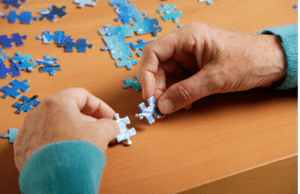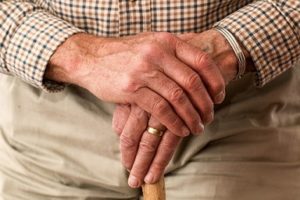
Statistics suggest that by the end of this year, there will be an estimated 1 million people in the United States living with Parkinson’s disease, with an estimated 60,000 more diagnosed each year. This neurodegenerative disorder negatively affects the neurons in a particular portion of the brain called the substantia nigra. When these dopamine-producing neurons are harmed over the course of several years, multiple symptoms may develop, including tremor, bradykinesia (slowed movement), rigid limbs, and movement problems.
Parkinson’s itself is not a fatal disease. However, the side effects it produces can severely impact the daily lives of those who live with it and can cause a large number of complications that can further affect health. In fact, the CDC lists Parkinson’s complications as the 14th leading cause of death in the United States.
What Causes Parkinson’s?
Unfortunately, much remains unknown about the specific mechanisms that trigger the onset of Parkinson’s disease. However, this area has become the subject of much research, which has revealed crucial links between the alpha-synuclein protein and the beginning of neurodegeneration that leads to Parkinson’s symptoms. Now, it is thought that certain environmental factors—including exposure to certain metals—may also contribute to the alpha-synuclein protein aggregation — the hallmark of Parkinson’s.
Researchers have found that there are elevated iron levels in the substantia nigra area of the brain that Parkinson’s inhibits, while high levels of copper and zinc have occurred in the cerebrospinal fluid of Parkinson’s patients. Researchers also note that exposure to high levels of manganese can cause similar symptoms to Parkinson’s. These factors have led Russian scientists to wonder—might exposure to certain metals contribute to Parkinson’s-related neurodegeneration?
Study Shows Potential Link Between Metals and Parkinson’s
In order to answer this question, researchers have studied the blood serum, urine, and hair samples of 13 Parkinson’s patients as well as those of 14 healthy, gender-matched control individuals. Levels of iron, copper, manganese, and zinc were notated in each, and participants experiencing other extraneous factors like other disorders, diet, surgery, injury, smoking, and unusual exposure to metal were excluded.
The results of hair, serum, and urine samples were fascinating. Researchers found a trend toward decreased hair and urine copper levels at -22% and -41% respectively, compared to the control groups, and urine iron and zinc levels trended 38% and 47% lower. Conversely, hair iron and manganese levels showed a tendency to rise by 24% and 21%, while blood serum levels remained the same.
Perhaps most intriguing is the increase in serum copper, which is thought to indicate reduced binding of copper to a compound known as ceruloplasmin in the blood. This excess free copper seems to increase oxidative stress and neuron damage, and could be linked to the formation of protein aggregates as well as the increased iron in the substantia nigra. As free copper levels in the blood serum are increased by as much as 10 times, the findings could prove significant.
Research Implications
While this research has produced significant data, it is important to remember that these fluctuations in metal levels are still within normal ranges. However, the changes on a molecular level must be rigorously investigated to understand how—if at all—the various increases and decreases affect the origin and progression of Parkinson’s disease. At the very least, this data has provided an intriguing starting point for future research about the role of copper, iron, and other metals, and could result in significant developments in Parkinson’s detection and treatment in the future.
Sources:
https://www.cdc.gov/mmwr/preview/mmwrhtml/mm5506a7.htm
https://www.parkinson.org/Understanding-Parkinsons/Statistics










